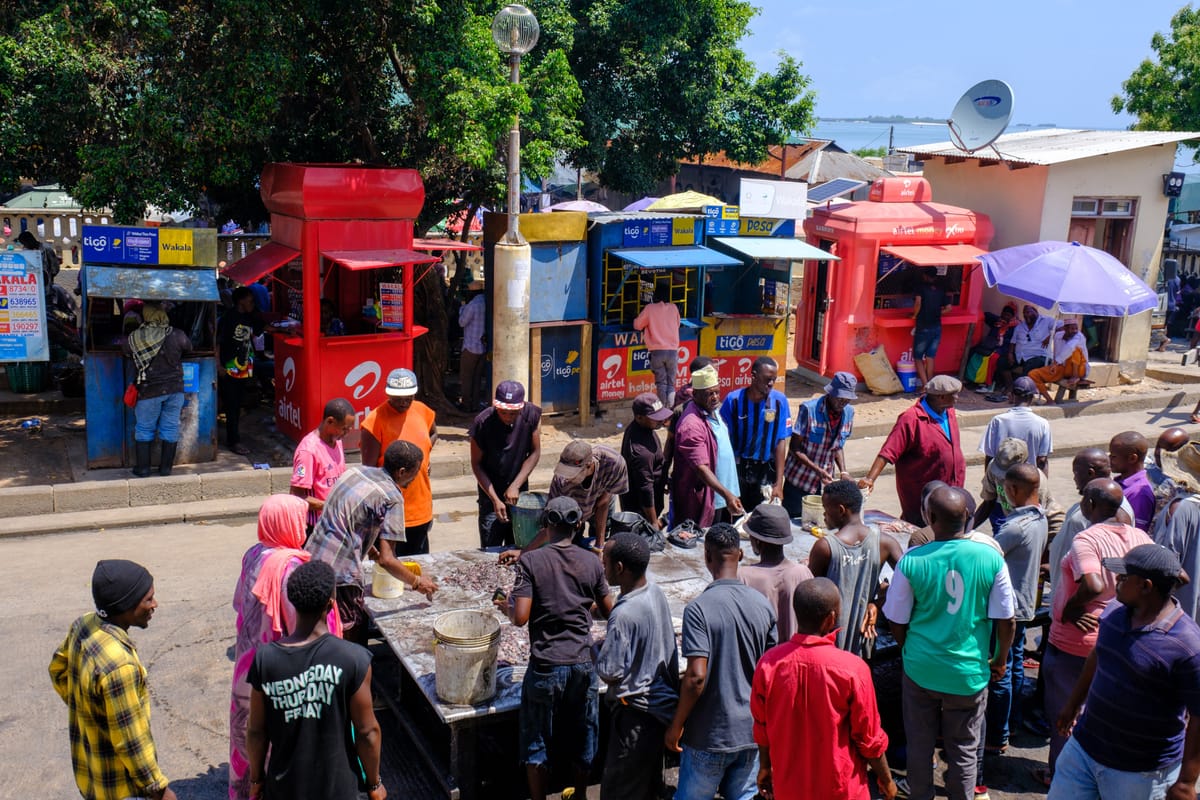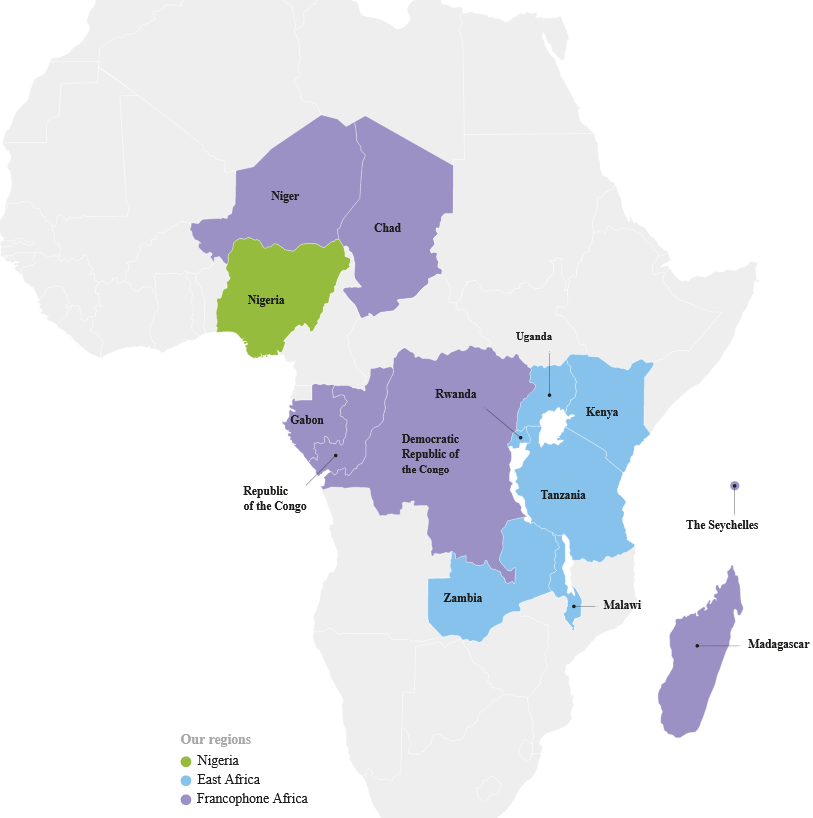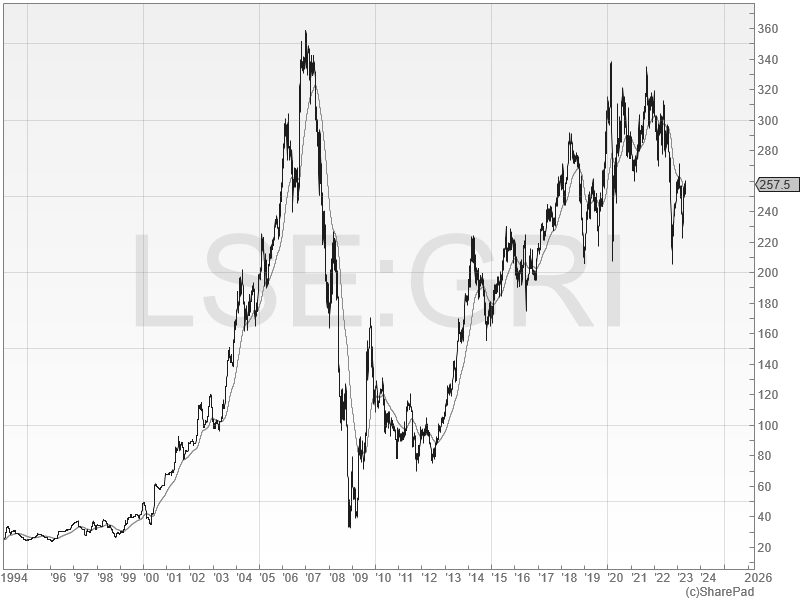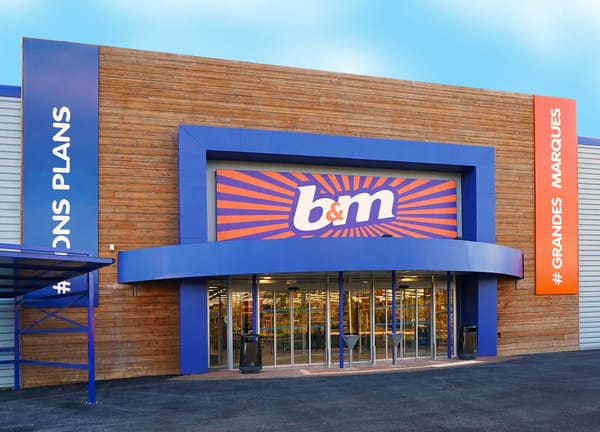Dividend notes: big spenders - AAF, GRI (11/05/23)
I review the latest results from FTSE 100 mobile operator Airtel Africa and FTSE 250 build-to-rent landlord Grainger.

Welcome back! Today I'm covering results from two capital-intensive – but very different – businesses. Both impress, but with some caveats.
Companies covered:
- Airtel Africa (LON:AAF) - a good set of numbers, highlighting the strengths and the risks inherent in this business. I remain impressed with progress.
- Grainger (LON:GRI) - this venerable rental property specialist is benefiting from strong market conditions that could continue for some time. My initial impressions are positive.
This is a condensed review of the latest results from UK dividend shares that are in my investable universe and may appear in my screening results.
Dividend notes is a new format I'm experimenting with, so any feedback would be particularly welcome - please feel free to comment below or contact me directly.
Airtel Africa (AAF)
"Total customer base grew by 9.0% to 140.0 million, as the penetration of mobile data and mobile money services continued to rise"
FTSE 250 group Airtel Africa is the second-largest mobile operator in Africa. It has 140m customers, including more than 50m data users and over 30m mobile money customers.
The group's operations are spread across 14 markets in sub-Saharan Africa:

This is a stock I've held previously in another portfolio and followed with interest since its listing on the London market in 2019.
Today's full-year results cover the year to 31 March. The company says that trading conditions remained good, with customers numbers up 9% to 140m. The number of data users on the group's networks rose by 16.9% to 54.6m, while mobile money users rose by 20.4% to 31.5m.
When compared to the stagnant results achieved by Vodafone and BT, Airtel's latest numbers show the benefits of operating in countries with low levels of market saturation, limited fixed line infrastructure, and poor access to banking services.
Financial highlights: Group revenue rose by 11.5% to $5,255m, while operating profit climbed 14.5% to $1,757m.
Reported earnings per share rose by 5% to 17.7 cents. Shareholders will received a full-year dividend of 5.45 cents per share, an increase of 9%. That's a yield of c.3.8% at a share price of 114p.
Profitability remained impressive, with an operating margin of 33.4% (FY22: 32.5%) and a return on capital employed of 23.6% (FY22: 21.1%).
Although after-tax profit fell by 0.6% to $750m, this was due to $248m of currency and derivative losses. Local currencies in "most of" the firm's markets suffered devaluation against the dollar last year, resulting in big translation losses.
This volatility is unavoidable given the company's end markets, but I think it should reduce in the future.
Airtel is gradually retiring its USD holding company debt and replacing it with local currency operating company debt. This should mean that currency translation effects are no longer amplified by debt servicing costs.
My calculations suggest that underlying free cash flow fell by 25% to $958m last year, giving a free cash flow yield of 11%. The reduction was due to a rise in capex, including a whopping $500m spent on 4G and 5G spectrum.
Net debt rose by nearly $600m to $3,524m. The company says this represents a modest-sounding net debt-to-EBITDA multiple of 1.4x. However, this doesn't tell me much about Airtel Africa's ability to service or repay its debt, while continuing to invest in its network.
For example, here's a breakdown of Airtel Africa's EBITDA from last year:
- "Underlying EBITDA": $2,575m
- Depreciation and Amortisation: $818m
- Operating profit: $1,757m
- Finance costs: $752m
- Pre-tax profit: $1,034m
In terms of leverage and debt service, Airtel Africa's cash interest costs of $400m represented 23% of operating profit last year, giving interest cover of 4.4x.
Year-end net debt of $3,534m was equivalent to 5.3x net profit, my preferred measure.
These figures are a little more highly-leveraged than I'd generally look for, but I can live with them in a telco or utility business.
Ownership: Airtel Africa is a FTSE 100 member, so minority investors should get more protection than those of soon-to-be delisted AIM stock iEnergizer (IBPO). But I think it's worth noting AAF's ownership structure.
This business was spun out of India's Bharti Airtel group in 2019. However, Bharti entities still control 67% of the shares. Free float is small, at just 22%. So to some extent, minority shareholders are just along for the ride.
Outlook: no new guidance has been provided for the year ahead. But broker forecasts prior to today's results suggested adjusted earnings of 18.4 cents per share and a dividend of 6.4 cents per share for FY24.
These estimates price the shares on about eight times forecast earnings, with a 4.3% dividend yield.
My view: I'm impressed by Airtel Africa's continuing double-digit revenue growth and profitability. In my view, the group's expansion could continue at this pace for some time yet.
I think it's worth noting that while telecoms is always going to be a capital-intensive business, the mobile money division allows Airtel Africa to enhance the returns from its investment.
Mobile money generated an operating profit of $318m last year at a margin of 46%. Capex is low compared to telecoms network spend. This means that financial services provide a significant improvement to the group's returns on capital employed.
However, I think the business does carry some risks. It's a pure play on Africa, with a dominant majority shareholder, and a only a short history as a UK-listed business.
On balance I'd say I'm interested, but still cautious. I won't be adding this company to my dividend portfolio just yet, but I will be following its progress.
Grainger (GRI)
"planned doubling of EPRA earnings over next 4 years"
FTSE 250 REIT Grainger is the UK's largest listed landlord in the build-to-rent sector, with a £3.1bn portfolio of c,10,000 homes.
Today's half-year results cover the six months to 31 March 2023 and look pretty solid – as we might expect given the current strength of the UK rental market.
Grainger's net rental income rose by 12% to £48m, driven by a 6.8% increase in like-for-like rents and a contribution from new properties. Occupancy remained very high, at 98.1%.
However, a reduction in profits from property sales and some higher costs meant that this growth only translated into a 2% rise in adjusted earnings, which climbed to £47.1m.
Grainger says the value of its portfolio fell by £47m to £3,705m (310p per share) during the period, equivalent to a reduction of 1.3%. Falls were greater in London (-2.6%) and much smaller (-0.4%) in regional locations.
Net debt rose by £132m to £1,394m as the group funded its development pipeline. However, the average cost of debt remains low, at 3.2%, with debt costs said to be "fixed in the mid-3%s for the next six years". With a loan-to-value ratio of 36.1%, I don't see any immediate concerns here.
Dividend: the interim dividend has been increased by 10% to 2.28p per share. Broker forecasts suggest a full-year payout of 6.3p, which would give a yield of c.2.5%.
Outlook: Grainger is expanding steadily and says it has a £1.6bn pipeline that will deliver c.6,000 new properties. Chief executive Helen Gordon says that projects and financing are secured that should double EPRA earnings per share over the next four years.
Broker forecasts suggest adjusted earnings of 10.3p per share this year, putting the stock on a forecast P/E of 25.
In terms of asset value, Grainger shares are trading around 15% below EPRA NTAV of 310p per share at the time of writing.
My view: given the structural challenges in the housing market, Grainger's growth plan seems logical to me. I think the question for investors is whether the company will be able to maintain its current level of profitability as it expands.
This business was founded in 1912 and has been listed since 1986. It seems to be prudently financed with a clear, focused business model and has been a strong performer for long-term investors:

I'm not very familiar with Grainger and would need to do more research to form a strong view. But my initial impression is that I don't see any reason why Grainger can't continue to perform well as it expands.
In terms of valuation, I think the shares are probably priced about right at current levels. Property prices may yet continue to fall and I estimate the business is valued at around 19x earnings, assuming annualised adjusted earnings of c.£100m.
The 2.5% dividend yield is too low for me to be interested, but I have a positive impression of this business and will continue to follow its progress.
Disclaimer: This is a personal blog/newsletter and I am not a financial adviser. The information provided is for information and interest. Nothing I say should be construed as investing advice or recommendations. The investing approach I discuss relates to the system I use to manage my personal portfolio. It is not intended to be suitable for anyone else.
You should carry out your own research and make your own investing decisions. Investors who are not able to do this should seek qualified financial advice. Reasonable efforts are made to ensure that information provided is correct at the time of publication, but no guarantee is implied or provided. Information can change at any time and past articles are not updated.




